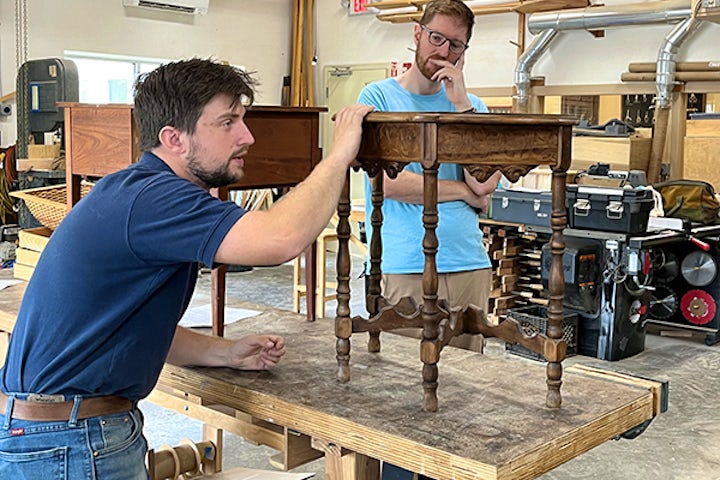CJ Attard Insights
Exploring the latest trends and insights in various industries.
Revive Your Relics: Furniture Restoration Secrets You Never Knew
Unlock hidden furniture restoration secrets and transform your cherished relics into stunning masterpieces. Discover the magic today!
Top 5 Essential Tools for Furniture Restoration You Must Have
Restoring furniture can be a rewarding DIY project, but having the right tools is essential for achieving professional results. Here are the Top 5 Essential Tools for Furniture Restoration you must have to make your restoration journey smoother and more efficient:
- Sandpaper: Proper sanding is the first step in any restoration project. A variety of grits, from coarse to fine, will help you strip away old finishes and smooth surfaces adequately.
- Wood Glue: Essential for repairing cracks and reinforcing joints, a high-quality wood glue provides the strength needed to ensure your furniture can withstand regular use.
- Paintbrushes: Invest in a set of good paintbrushes for applying varnish or paint. They help achieve an even finish and can make a significant difference in the final result.
- Stripper or Solvent: When it comes to removing old paint or stains, a reliable stripper or solvent is crucial. Choose one that is effective yet gentle enough not to damage the wood underneath.
- Protective Gear: Don’t forget your safety gear! A mask, gloves, and safety glasses will protect you from dust and harmful chemicals during the restoration process.

Common Mistakes to Avoid When Restoring Antique Furniture
Restoring antique furniture can be a rewarding endeavor, but it's important to avoid common mistakes that can diminish the piece's value and integrity. One frequent error is using harsh chemicals during the cleaning process. These can strip away layers of finish or damage the wood. Instead, opt for gentle cleaners specifically designed for antique restoration. Additionally, be cautious with the use of power tools; they can quickly cause irreversible damage if not handled properly. It's often best to employ traditional hand tools for delicate tasks.
Another pitfall to watch for is over-restoration, which can significantly alter the original character of the furniture. It’s critical to maintain the piece's authenticity, which includes preserving patina and any unique markings that reflect its history. When making repairs, try to use materials similar to the original, and consider consulting an expert to determine the best methods to restore structural integrity without compromising the antique's original appearance.
How to Identify and Repair Damage in Vintage Furniture
Identifying damage in vintage furniture is crucial for maintaining its value and longevity. Start by examining the wood for any signs of wear, such as cracks, splintering, or discoloration. Pay close attention to joints, as they can reveal structural issues. Using a flashlight, inspect beneath the surface to uncover hidden damage like termite infestations or water stains. Make a checklist of the areas that need repair and prioritize them based on their severity. It’s essential to assess not just the aesthetic aspects but also the functional components of the furniture.
Once you've identified the areas needing attention, it's time to implement the necessary repairs. For scratches and minor dents, consider using a touch-up pen or wood filler to restore the finish. More significant damage, such as broken legs or loose joints, may require gluing or even the replacement of parts. Always consult with a professional if the repair seems beyond your skill level. Remember, properly restoring vintage furniture not only enhances its beauty but also preserves its historical and monetary value.